Creating software involves six essential steps, guiding the process from the initial idea to delivering the final product to the client. In this article, we’ll walk through these six crucial stages in the software development process. Whether you’re a developer or a client searching for software development partners, understanding these steps is key.
What is the software development process (lifecycle)?
The software development process (or software development lifecycle), true to its name, is a series of steps of creating software that meets the goals and needs of a business. A development team usually carries out software development process steps. This process involves various tasks such as research, programming, testing, debugging, and more.
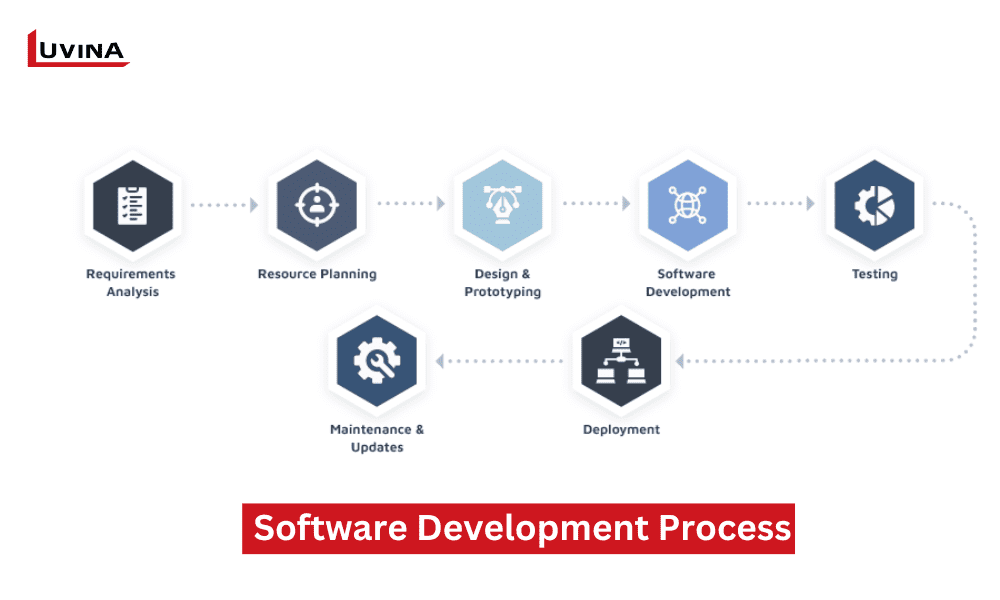
Reasons for software development lifecycle process
As mentioned above, the software development process aims to meet the needs of the business (customer) or even create a product that exceeds customer expectations.
In addition, the process of developing software can also occur for various reasons:
– To solve a particular problem.
– For individual use (For example, a retail store owner may need software for payment processing and inventory management).
It’s not by chance that there are many detailed steps in a software development process. From the perspective of developers, this process helps to systematize software development and manage potential risks in the software development process. Thanks to this, the quality of the product can be ensured.
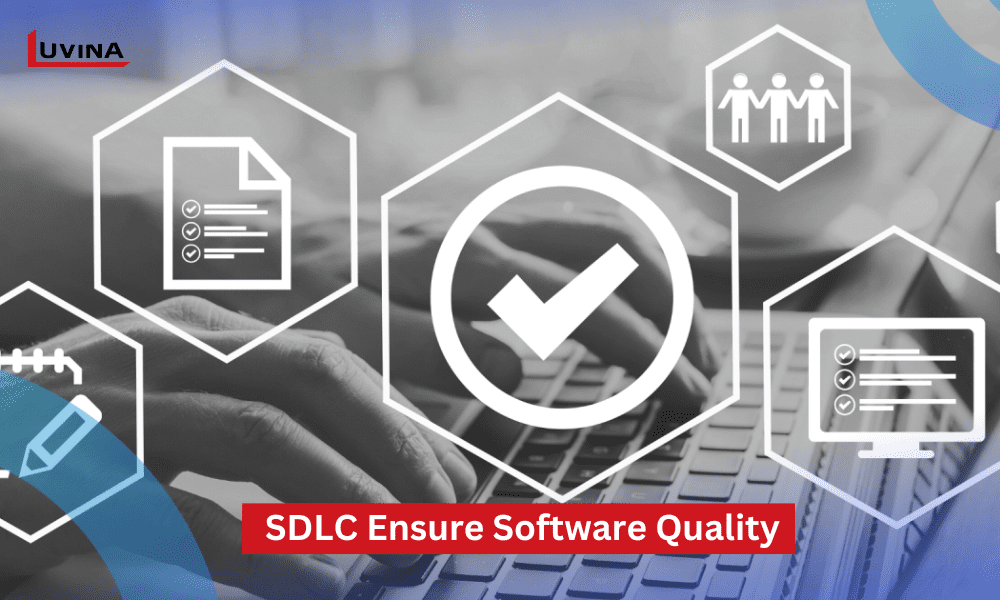
6 phases of the software development process
The software development process consists of many crucial stages to create functional software. At Luvina, this process is divided into the following 6 basic stages:
1. Initial meeting
The initial meeting is the first step in the software development life cycle process at Luvina. At this phase, the software development team and the client will meet to discuss the project. It’s the time when the client can clearly express their desires and requirements for the product. The software development company also needs to clarify and analyze the requirements to ensure the creation of the most suitable product.
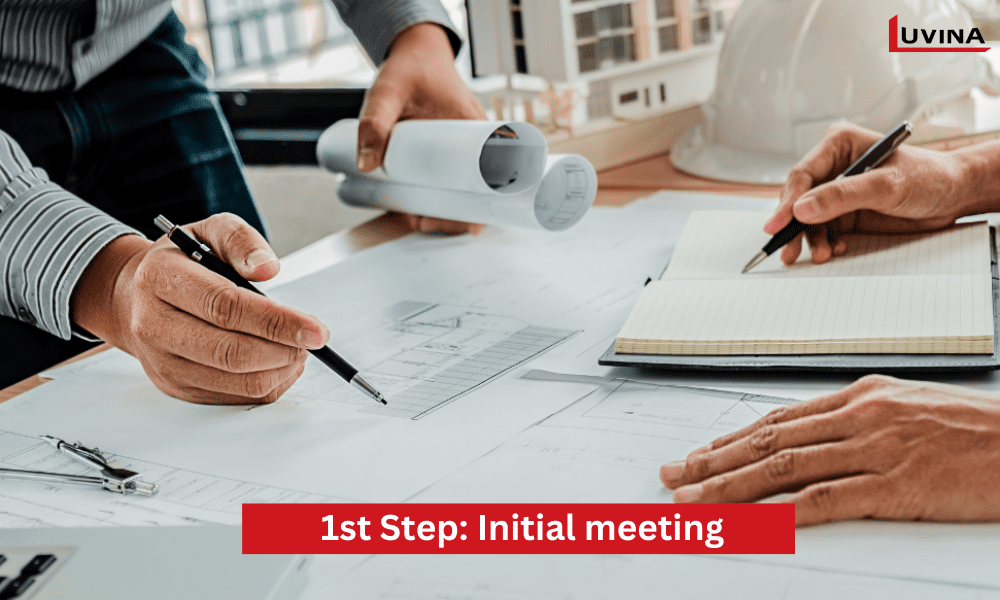
2. Project Assessment and Proposal
After understanding the client’s needs, the software development company will proceed to evaluate the project and propose a software development plan. This plan will include approaches, timelines, as well as budget estimates.
3. Development team setup
Right after the proposed plan is approved, and both parties sign the contract, the software development company will establish a team of developers to execute the project. The selected developers must possess skills and experience that align with the nature of the project.
4. Development and Q&A
This is one of the phases of software development process, when the development team begins creating the software after conducting project analysis and adjusting the plan according to customer requirements. This stage involves various tasks, including designing the interface, coding, and quality testing to ensure the product meets the requirements, and delivering it to the customer on time.

5. Delivery and Deployment
After completing the coding, testing, and quality assurance, the software development team will deliver the project output, including source code, testing reports, documentation, and compiled applications. At this stage of the software development process, the software is ready for installation on devices to test its functionality.
Depending on the customer’s requirements, the development team may deploy the software to the customer’s environment, such as servers or the cloud.
6. Warranty, Maintenance, Operation, and Support
Because timely maintenance and improvement of the software ensure its smooth operation. Luvina, in particular, and software development companies, in general, will accompany the product throughout its lifecycle. As soon as customers have needs, the software development team can assist in product operation, software maintenance, and various other tasks according to the customer’s preferences.
3 Key Methodologies Of Software Development Processes
In the software development process, developers need effective methodologies to organize and plan. There are various software development models, among which the three most important and popular ones are Waterfall, Agile, and Prototype. Let’s delve into the details of these 3 models in the section below.
1. Agile development model
The Agile development model emphasizes flexibility. With this method, a large project is divided into smaller units. Each unit has a complete process, including planning, requirement analysis, design, coding, testing, and maintenance.
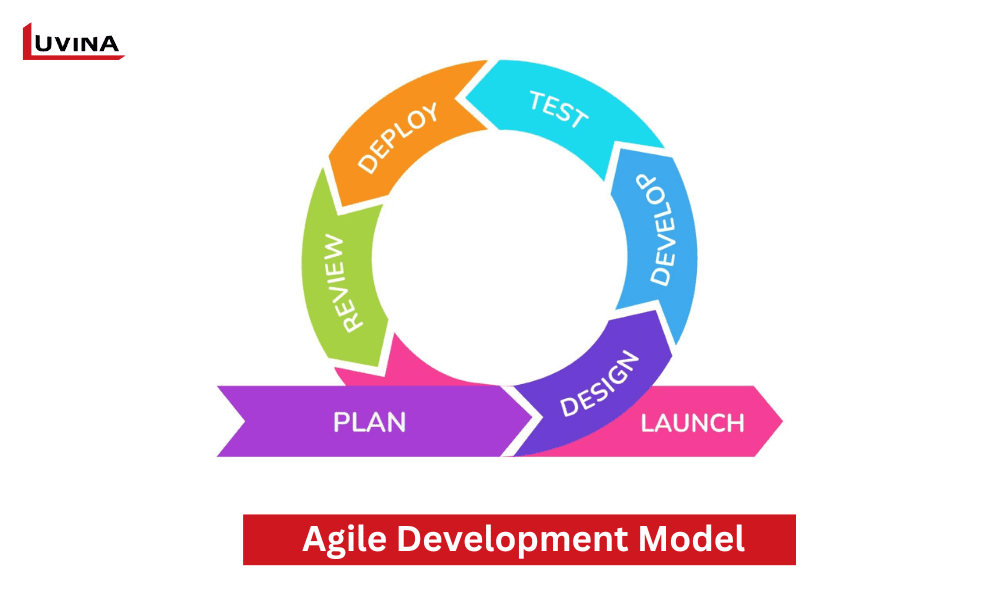
When using this model, the development team must regularly gather customer feedback to make immediate adjustments and improvements to the software. Therefore, customers also play a crucial role in the Agile development model.
Currently, most large businesses are using this software development model.
2. Waterfall development model
The Waterfall software development model (also known as the Classic life model) is one of the earliest software development methodologies. This approach is distinguished by a logical succession of stages that flow downhill like a waterfall. In other words, the Waterfall development approach requires that each stage be accomplished before proceeding to the next.
The steps in the Waterfall software development process are quite straightforward, including:
– Customer requirement analysis
– System design
– Software development
– Testing
– Deployment
– Maintenance
The stages of the software development process are carried out sequentially like a waterfall
This model is well-structured and easy to understand but less flexible than the Agile model. The Waterfall method is suitable for large organizations or government agencies.
3. Prototyping Development Model
Both the Agile development model and the Prototyping model are iterative methods. However, the Prototyping model involves the software development team creating a basic prototype of the product to test its usability. During testing, developers continuously gather feedback and make continuous improvements until the best version of the prototype is achieved.
The steps of the Prototyping model include:
– Identify basic customer requirements
– Develop the initial prototype
– Monitor and analyze user feedback
– Modify the prototype
– Create the final product
– Test and deploy for the last time
This model of software development lifecycle is excellent for determining the actual needs of customers based on feedback. Therefore, products created with the Prototyping model tend to have a higher success rate and be more user-friendly.
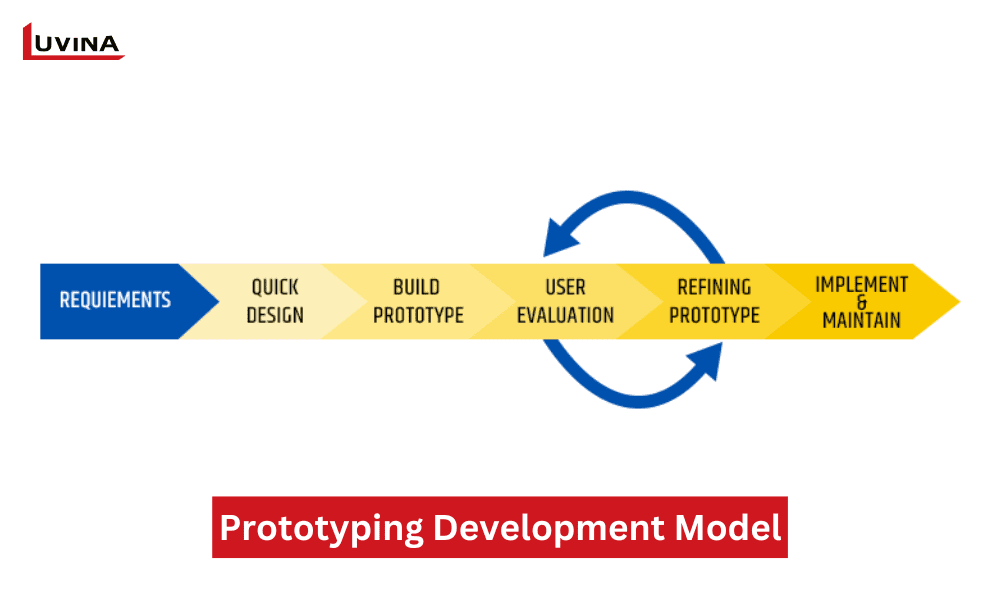
>> Also Read: Top 7 Software Development Methodologies
How can Luvina help?
As a world-respected information technology company, Luvina will assist customers in developing products throughout the product lifecycle. Luvina offers a variety of services such as Software development Service, QA & Software Testing Service, IT Managed Service, etc…
At Luvina, every phase of software development processes is ensured to achieve the highest efficiency, align with customer desires, and be completed in the quickest time, and with the most optimal cost.
With over 20 years of software development experience, we will help bring your software from the idea stage to the creation of the product.
Contact Luvina now to start a new journey with us.
Software Customization
Full-cycle Software Development Services
Offshore Development Center

Conclusion
Above are the 6 crucial steps of the software development process and the basic methods to implement this process. Whether applying Agile, Waterfall, or Prototyping methods, the ultimate goal of the software development lifecycle is to create an efficient, low-risk process to produce the best product that meets customer needs.








Read More From Us?
Sign up for our newsletter
Read More From Us?
Sign up for our newsletter